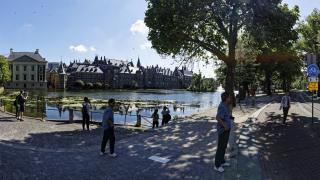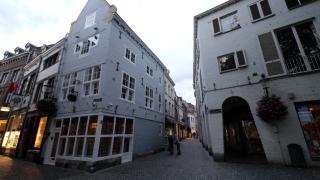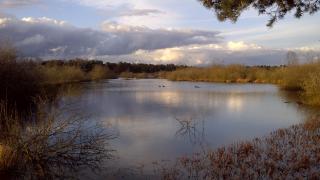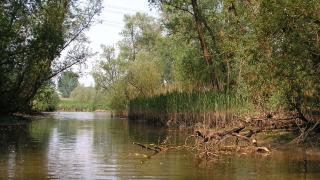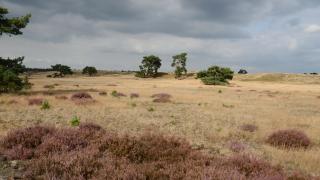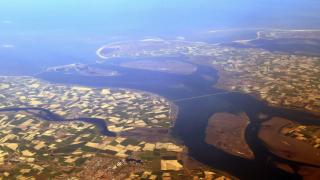Dutch Coastline at a Glance
The Netherlands has over 450 km of North Sea coastline. Beaches stretch from Zeeland to Groningen. Wide sandy shores dominate, with dunes up to 60 meters high. Strong sea winds shape the landscape and attract kite surfers.
- Key areas: Scheveningen, Zandvoort, Noordwijk, and the Wadden Islands.
- Zandvoort is 24 km from Amsterdam; train takes 30 minutes.
- Noordwijk offers 13 km of beach, popular for water sports.
- The Wadden Islands are UNESCO-listed, known for quiet, natural dunes.
Beach pavilions ("strandpaviljoens") open from March to October. Entry to beaches is free. Parking costs vary: €2-€4 per hour in busy areas.
Beach life is part of Dutch culture. Locals cycle to the coast, picnic in the dunes, and visit beach clubs. Summer water temperature averages 18°C. Peak season is June to August. Winter brings brisk walks and storm watching. Dogs are allowed on many beaches outside summer months.
Top Beach Destinations
Scheveningen is The Hague’s main beach. It features a 381-meter pier, Ferris wheel, and lively boulevard. The area hosts events like the annual International Fireworks Festival in August. Beach clubs operate from April to October. Paid parking is available from €3.60 per hour. Easily reached by tram 9 from Den Haag Centraal in 15 minutes.
Zandvoort aan Zee lies 24 km west of Amsterdam. Direct trains from Amsterdam Centraal take 30 minutes. The beach is dog-friendly from October to April. Popular for kite surfing, beach volleyball, and Formula 1 racing at Circuit Zandvoort. Day parking costs around €15 in summer.
Noordwijk offers 13 km of sandy beach. It is known for water sports, horse riding, and beach pavilions. The Keukenhof flower fields are 8 km away, blooming from March to May. Noordwijk is accessible by bus 90 from Leiden in 35 minutes.
Egmond aan Zee is quieter and family-oriented. The beach is 5 km long, with shallow waters and dunes. Lifeguards are present in summer. Parking is €2.10 per hour. The village hosts a lighthouse and local seafood restaurants.
Wadden Islands (Texel, Vlieland, Terschelling, Ameland, Schiermonnikoog) are UNESCO-listed. They offer wide, pristine beaches and unique tidal flats. Ferries depart from Den Helder, Harlingen, Holwerd, and Lauwersoog. Cycling and hiking are popular. Entry to Schiermonnikoog National Park is free. Each island has distinct landscapes and birdlife.
Katwijk aan Zee offers a traditional Dutch beach village experience. Located 13 km from Leiden. Local fish stands serve haring for €3.50. The boulevard has family-run cafes. The beach is quieter than Scheveningen, especially on weekdays.
Bloemendaal aan Zee is known for trendy beach clubs like Woodstock69 and Fuel. Entry is free; sunbed rental starts at €10. The crowd is mostly young locals. DJs play on summer weekends. Trains from Amsterdam to Overveen take 30 minutes, then a 15-minute bike ride.
Ouddorp in Zuid-Holland has 18 km of sandy beach. Popular for windsurfing and blokarting. Equipment rental from €20 per hour. Zeeland’s Brouwersdam is a hotspot for kitesurfers. Wide open spaces mean less crowding, even in July.
Tips:
- Visit Zuid-Holland’s stretches between Noordwijk and Katwijk for quiet dunes.
- Early mornings or late evenings are best for solitude.
- Free parking is available at Ouddorp’s main entrance.
Beach Activities and Experiences
Swimming is possible at most Dutch beaches from June to September. Lifeguards patrol main beaches like Scheveningen and Zandvoort. Water temperatures range from 17°C to 21°C in summer.
Sunbathing is popular on wide sandy stretches, especially at Noordwijk and Bloemendaal. Beach chairs and windbreaks rent for €7–€12 per day.
Beach bars (strandpaviljoens) operate from March to October. Many, like Woodstock 69 in Bloemendaal, offer live music and local snacks.
Water sports are a major draw. Kitesurfing and windsurfing schools operate in Noordwijk, Kijkduin, and Brouwersdam. A two-hour beginner lesson costs around €60. Sailing is common on the Zeeland coast and Wadden Islands.
Nature walks are marked through dunes at Meijendel and Zuid-Kennemerland. Cycling paths run parallel to the coast, with bike rentals from €10 per day.
Birdwatching is best in spring and autumn at Texel and Schiermonnikoog.
Family-friendly options include shallow tidal pools at Egmond aan Zee and Katwijk. Many beaches have playgrounds and summer events, like sand sculpture festivals in Scheveningen. Parking fees range from €2–€4 per hour.
Practical Tips for Beachgoers
Getting there:
- Dutch beaches are accessible by train and bus. Scheveningen is 15 minutes by tram from The Hague Centraal.
- Zandvoort aan Zee is 30 minutes by train from Amsterdam Centraal. The station is 200 meters from the beach.
- Cycling is popular. Fietspaden (bike paths) run along the coast. Bike rental costs from €10 per day.
- Parking is limited and paid. Expect €2.50–€4 per hour in Scheveningen and Noordwijk. Free parking is rare.
Facilities:
- Most main beaches have public toilets (€0.50), showers, and lockers. Facilities are open April–October.
- Beach pavilions (strandpaviljoens) offer food, drinks, and sunbeds. Prices: coffee €3, sunbed rental €8–€12 per day.
Weather:
- Dutch beaches are windy. Rain is common, especially in spring and autumn.
- Best months: June–August. Average temperatures: 18–22°C. Water remains cool (17–20°C).
What to pack:
- Bring layers and a windbreaker. Even summer evenings can be chilly.
- Sun protection is essential. UV index can be high on clear days.
Dogs and etiquette:
- Dogs are allowed off-leash October–April. Restrictions apply May–September; check local signs.
- Nudist beaches (naaktstranden) are marked and common near Zandvoort and the Wadden Islands.
- Respect local rules. No loud music. Dispose of waste in designated bins.
Staying Safe by the Sea
Dutch beaches face the North Sea. Strong currents, known as 'muien', can form near groynes and piers.
- Always swim between yellow-red flags at guarded beaches like Scheveningen, Zandvoort, and Noordwijk.
- Lifeguards (reddingsbrigade) operate from May to September, 10:00–18:00. Check local boards for hours.
- Flag system: Green = safe, Yellow = caution, Red = no swimming. Black/white flag = no lifeguard present.
- Tides shift quickly. Low tide exposes sandbanks; high tide can trap walkers, especially on Wadden Islands.
- Sudden weather changes are common. Strong winds and storms can arrive within minutes. Listen for sirens or beach loudspeakers.
- Water temperatures rarely exceed 21°C, even in summer. Hypothermia risk remains, especially for children.
- For families: Stay close to supervised zones. Wristbands for children are available at lifeguard posts.
- Solo visitors: Avoid isolated stretches and swimming alone. Mobile signal is strong on most beaches.
- Emergency? Call 112. Lifeguard posts display local emergency numbers and tide tables.
Quick Beach Planning Checklist
Essentials to pack:
- Windproof jacket; Dutch coasts are breezy, even in summer
- €0.50 coins for paid toilets at Zandvoort and Scheveningen
- OV-chipkaart for train/tram travel to beaches
- Sunscreen; UV index can be high from May to September
Safety reminders:
- Check local tide times (getijden) online before visiting
- Swim only at guarded beaches marked with yellow-red flags
Transport/timing tips:
- Trains to Zandvoort run every 30 minutes from Amsterdam Centraal
- Avoid peak crowds: arrive before 10:00 or after 16:00
More info: visit holland.com/coast

